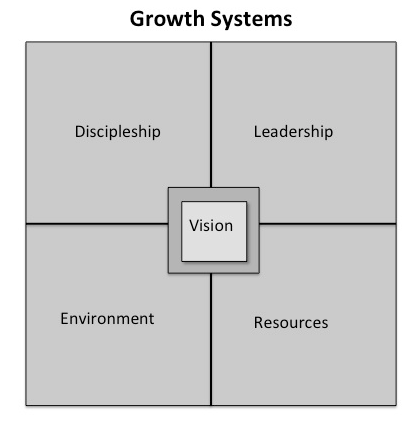
To Develop Generous Disciples, Understand Why People Give
If you want your church to grow, you must learn how to motivate believers to invest their resources into the kingdom for ministry and for facilities. It is a key responsibility of leadership. Whoever writes the agenda must be able to underwrite the agenda. If you’re going to form the vision you also have to be able to fund the vision.
A lot of pastors, a lot of elders, lot of church leaders have a real hangup about asking people to give. They allow personal insecurities and personal fears to limit the ministry. You don’t need to be embarrassed about asking people to give. There is nothing greater than the kingdom of God. There is no more significant cause than the church.
I am very much against fundraising, but I am in favor of teaching people to give. Fundraising is what I call collecting money from other people in return for a product, service, reward or recognition. But in giving, we simply challenge ourselves to give out of our own resources for spiritual reasons. The result of fundraising is that funds are collected. The results of teaching people to be givers is that funds are collected and disciples are developed.
And to develop generous disciples, you need to understand why people give.
1. People give when they trust the leadership.
John 10:1-11 says, “The sheep listen to the shepherd’s voice. He calls his own sheep by name and leads them out. He goes on ahead of them and his sheep follow him because they know his voice but they will never follow a stranger. In fact, they will run from him. The good shepherd lays down his life for the sheep. The hired hand is not the shepherd.” Study after study has proven that in the hierarchy of giving, people give first of all to people they believe in. Then they give to purposes. Finally they give to programs. That means that the most essential elements in teaching people to give are relational, not functional.
Even if you use a consultant to help you raise money, you as the pastor still need to be out front. Because the person who asks for the giving needs to be the person with the most credibility. And if you are a Pastor and you are not the most trusted person, you have a leadership problem and you’re not ready to teach people to give yet. You need to be the most visible because the person who is the best qualified to ask for money should be the person whose the most trusted.
2. People give when they catch a vision, not when they see a need.
The Bible says, “Where there is no vision the people perish.” Did you know that Ivy League schools usually receive the largest endowments? And they are the schools that need the money the least. Why? People give to success. They give to vision. They don’t give to needs. That’s why in fifteen years we have never had a bulletin with our financial reports in it along with how much we need. Why? Because bills do not motivate people to give. People give when they catch a vision and they get the big picture.
You must be very clear about what your vision is. At Saddleback, we’ve never had a vision for a building, but rather for what the building can help us do. We’ve never had a vision for raising money, but rather for what the money can do. Emphasize the lives that will be changed as people give – the marriages that will be saved, the broken people that are going to be put back together, the people who will break addictions, the changed lives that will happen. That’s the vision!
3. People give to experience the joy of generosity.
It feels good to give generously – it really does. A person who doesn’t understand that has never given generously. The happiest people in the world are the most giving people. Guilt never motivates people to give. Giving that is motivated by guilt only lasts as long as the guilt does. So you never use guilt to motivate people to give. You use joy to motivate people to give.
I absolutely do not accept the health and wealth theology, which teaches that God wants everybody to be rich. But the fact is, there are more promises in the Bible related to giving than any other subject. You cannot out-give God. If you’re going to be Christlike you’ve got to learn to give.
4. People give when they are inspired by models.
We learn best by watching models. That’s why a testimony about giving is a thousand times more effective than a sermon on giving. Models motivate us. Giving is contagious. So I encourage people to write down and send me their testimonies, how they decided to give, and what they were giving.
5. People give when they are involved.
Paul told the Philippians, “I thank God because of your partnership in the gospel.” The fact is those who are most involved in the campaign will be those who sacrifice the most. One of our gauges of involvement at Saddleback is how many people have completed our CLASSes (and you can get our CLASS material here). And the more CLASSes people have completed, the more involved they are, and the more they tend to give. The average gift in our church from an attender during one of our giving campaigns was about $7000. For the people who had gone through class 101, the average gift was $8500. The average of gift for people who had been through class 201 and 101 was over $11,000. And the average gift of people who had been through 101, 201 and 301, which usually indicates they are actually involved in the ministry of the church was over $15,000.
6. People give when you ask them to give.
James says, “You have not because you ask not.” The Bible says ask and seek and knock. God asks people to give. The fact is we’re doing people a favor when we ask them to give because they grow in faith, they grow in love, they grow in sacrifice, they grow in commitment, they grow in character as they learn to give. They will be blessed in return. Never say no for anybody. Your church will be hurt more by those who would have said yes and were not asked than by those who were asked and said no.
7. People give when you make it possible for them to give.
2 Corinthians 8 says, “For if the willingness is there the gift is acceptable according to what one has not according to what one does not have.” That means you need to make it possible for people to give in as many ways as you can. Teach people how to want to give and they’ll figure out how.
Teach people that they can either give by reason or by revelation. Giving by reason means this – I look at what I have, I figure out what’s reasonable and I commit that amount. It doesn’t take any faith to give by reason. I just figure out what can I afford to give. Giving by revelation means I determine my gift by praying “Lord, what do You want to give through me?” This requires faith. When you give by revelation, you’re committing an act of worship and saying, “How much am I willing to trust God?”
8. People give when their gifts are appreciated.
The whole book of Philippians is just a thank you letter from Paul for their offering, for their financial support. Figure out seven ways to thank people for their gift – a card, a call, a banquet, etc. A little appreciation goes a long way in encouraging people to be generous for the long haul.
Would you like to learn more about developing generous disciples in your church? Connect with an Auxano Navigator and start a conversation with our team.

Tags: Generous Disciples, Resourcing, Rick Warren, Why people give






















